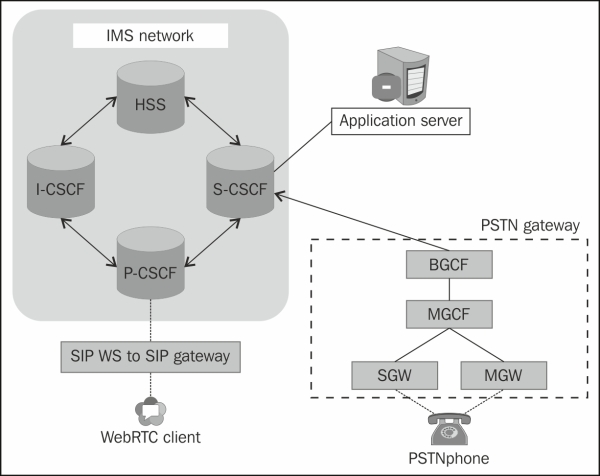The service logic
Just as explained in the previous chapter, the service logic execution for various services such as conferencing, Virtual Private Network (VPN), announcements, and other services applicable to PSTN systems, can be scripted in IN Service Control Point (SCP) or IMS SIP Application Server, or both. We will discuss these three approaches in brief here.
SIP service logic through application server
When the SIP call control logic is defined in the form of the SIP Servlet or the JAIN-SLEE program or, in a similar way, it is loaded and deployed onto the SIP application Server; the SCSCF consults the SIP application server for every call. The following diagram shows the IMS-to-PSTN connectivity using the Application Server call control:

Many SIP applications such as call screening, Music on Hold, and the ring back tone advertisement are applicable for use with PSTN systems and can be integrated with the approach mentioned in the previous section.
IN services via IMSSF
As majority of...


























































